
Château de Castelnaud
Castles - Palaces - Manor Houses
Production :  © 2022
© 2022


Production :  © 2022
© 2022
The castle is one of many medieval castles found in the Périgord Noir along the Dordogne. Perched on a rock not far from Sarlat-la-Canéda and Bergérac, it stands on the banks of the Dordogne opposite another fortification, Beynac Castle.
The river was a front line between the English and the French, because in the Middle Ages, between 1337 and 1453, the 100-year war raged here in particular.
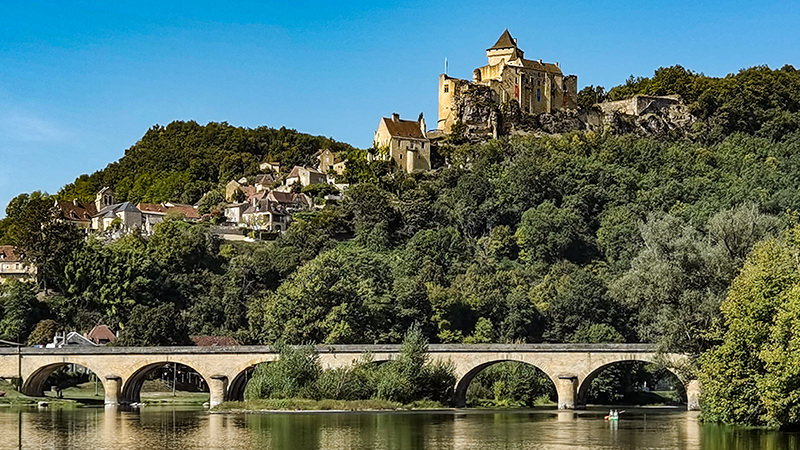
The first and historically confirmed mention of Castelnaud Castle dates back to 1214, when Simon IV de Montfort, leader of the crusade against the Albigensians, conquered the castle on behalf of Pope Innocent III and returned it to the ownership of the French King Philip II.
During the Hundred Years' War, Castelnaud was a strategically important fortress due to its exposed river location, which was difficult to attack, and it changed hands several times.
At the beginning of the French Revolution in 1789, Castelnaud was looted and set on fire. However, the masonry remained until 1832, when it was decided to use the castle as a quarry to build bank fortifications on the Dordogne.
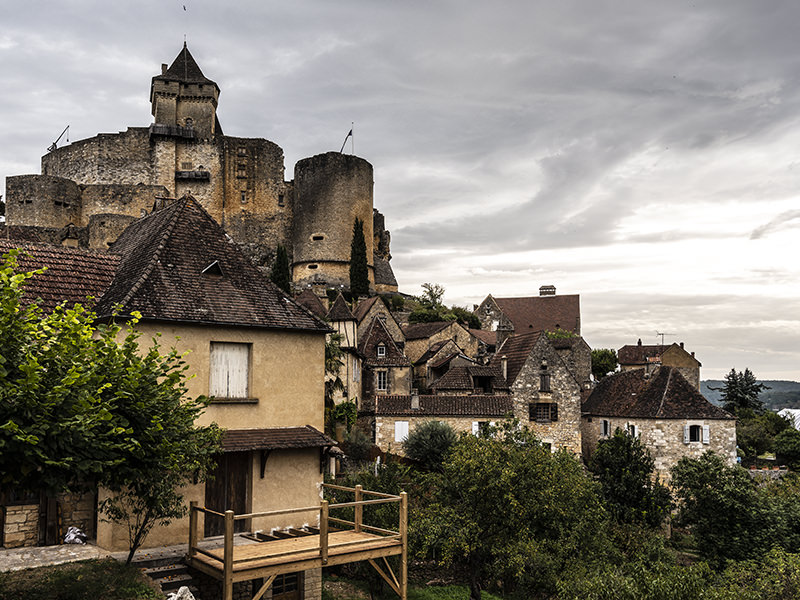
During the Wars of Religion between 1562 and 1598, one of the most important Huguenots, Geoffroy de Vivans, ruled over Castelnaud. De Vivans was in direct favor with Henry IV and successfully played his powerful position in the region - Castelnaud was not exposed to any attacks during this period.
At the end of the 16th century, Jacques Nompar de Caumont had extensive extensions carried out once again, but Castelnaud increasingly lost its importance. The beginning of the French Revolution in 1789 brought the «end». Castelnaud was looted and set on fire. The masonry remained until 1832 and served as a quarry for bank fortifications of the Dordogne and house construction in the village.
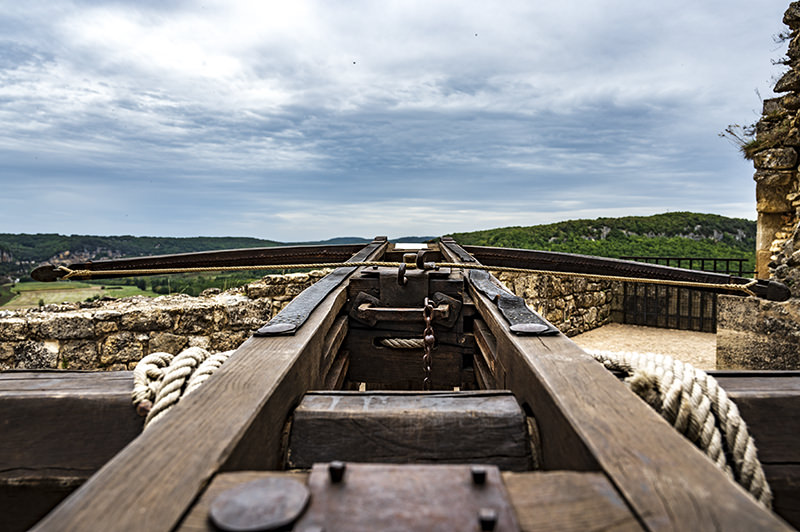
The background of the Hundred Years' War is fascinatingly present-day: it was about power, land and ultimately the yield from these lands.
The war can be divided into three phases. The second phase from 1415 to 1435, but also the competing papal claims between Rome and Avignon from 1378 to 1417 were the reason for the parallel civil war of the Armagnacs and Bourguignons.
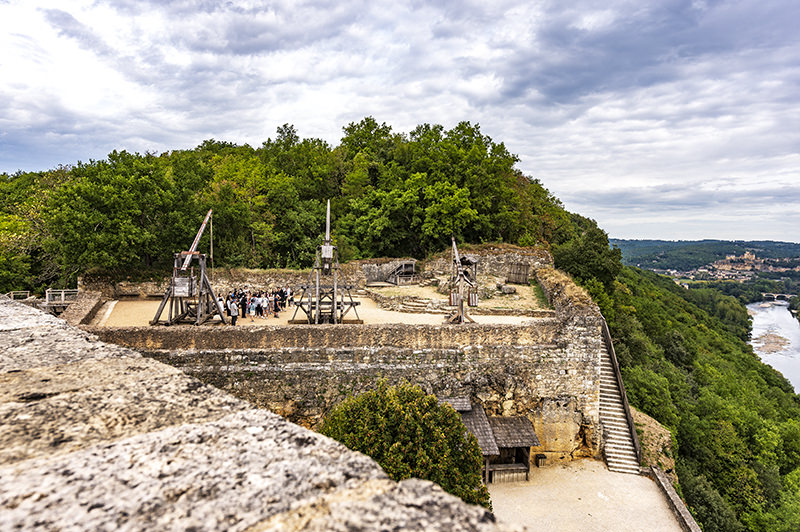
The sheer length of time that this conflict lasted spurred the development of new weapons and defenses. This can be seen very clearly here, as the castle houses a museum of medieval war machines and the fortifications were also developed over time. It is considered the most visited in all of southwestern France.
The silhouette of the castle is dominated by the square 13th century donjon, central defense or residential tower of the lord of the castle. To the northwest the outer fortification line runs and surrounds a second smaller square tower from the 15th century.
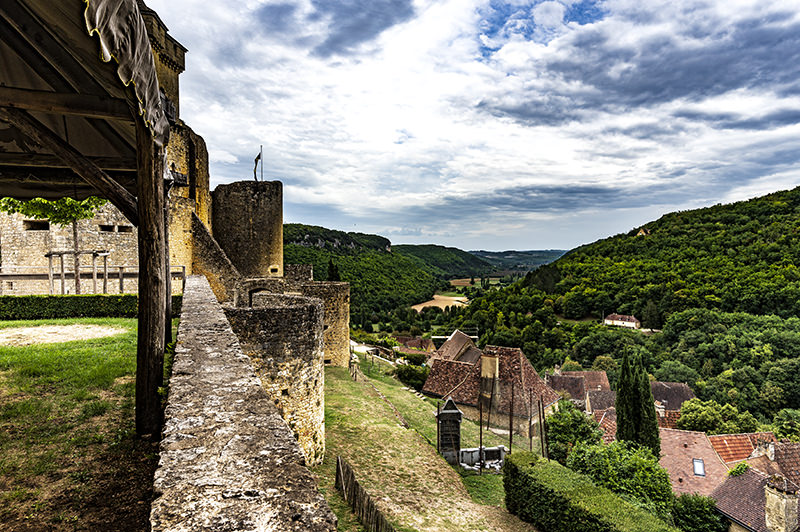
In response to the development of new firearms and siege weapons, a gate fortification with its own inner courtyard was also built in the 15th century to reinforce the actual castle gate. Further to the north, a 15-meter-high shield wall with battlements and embrasures closes off the inner courtyard from the forecourt and connects the 15th-century residential building with the keep. A special feature of Castelnaud is the artillery tower, which was added to the south around 1520, but its military use has never been proven.
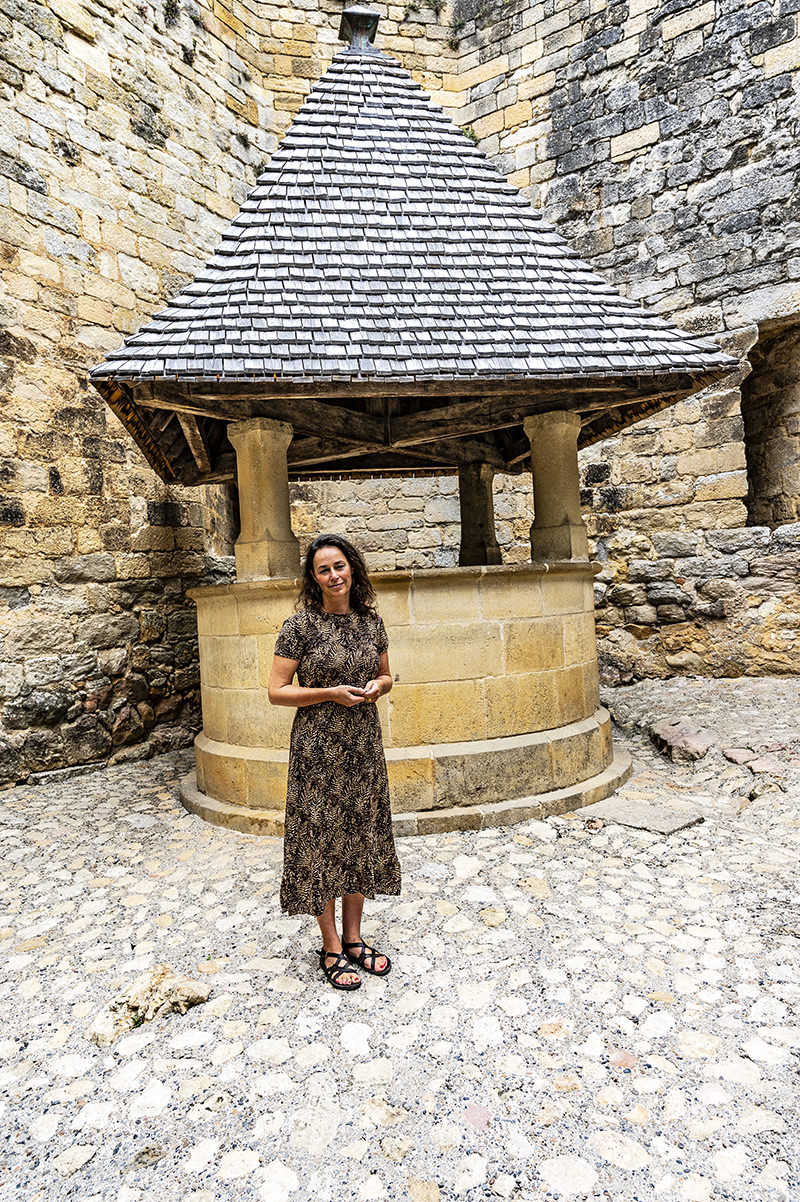
What today is called "critical infrastructure" existed in the Middle Ages, of course. The water supply was an essential point that helped ensure survival in a siege situation. This well here is deep and special with its own roof against contamination or spillage by large stones from the castle wall that could be torn out by the new ranged weapons and hurled into the courtyard.
But neither new weapons developments nor improved defenses were decisive for the outcome of the war. The English inability to act resulted from the banishment and murder of the king's most important advisor by Parliament, the Duke of York. The English king's health collapsed in 1453. The English, worried about their bridgehead at Calais, opened a counteroffensive, but it ended with the defeat and death of the English commander John Talbot at Castillon. Bordeaux was finally conquered by the French in 1453.
With this victory, only Calais remained in English possession until 1558. Nevertheless, the English kings did not give up their claim to the French crown, which was always in their title, until the beginning of the 19th century.
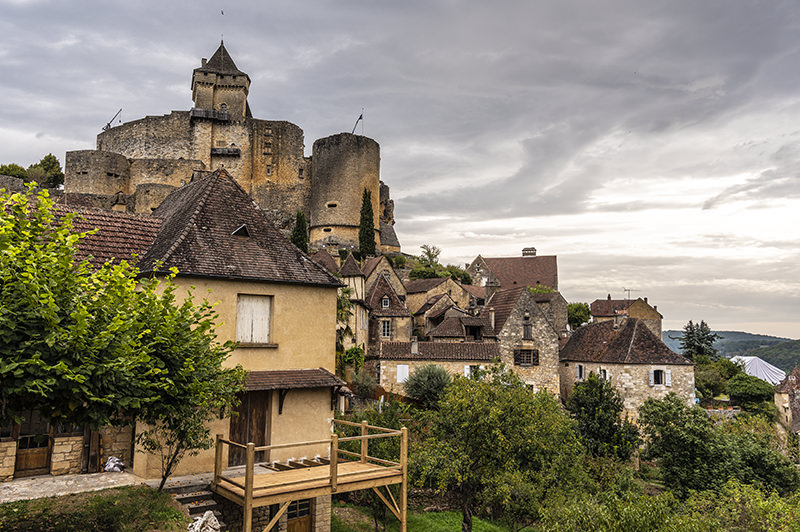
A visit to the castle is really interesting. We don't just see old walls, or get lessons in French history.
The focus on architecture and technical development of the Middle Ages give an impressive insight into the living conditions of that troubled time and thus make the stay entertaining.
The ancestors of today's self-propelled howitzers, set up on a hill opposite the keep, are functional and can do their job, as we are shown on a scale model.
We consider this highly recommendable.